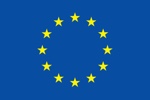Intra-cavity PTS with optical feedback for isotopic verification of food origin
The use of high finesse optical cavities can provide dramatic enhancements of the circulating intracavity power and thus of the sensor signals. However, the build-up of optical power in a cavity additionally requires efficient injection of light into the cavity. To achieve this, the laser emission wavelength must be tightly locked to a resonance wavelength of the cavity, which is non-trivial even under laboratory conditions. Optical feedback locking is an elegant solution to this problem. Here, re-injection of light from the cavity into the laser forces the laser to emit light at the injected light‘s wavelength. To achieve a positive optical feedback (i.e. re-injection of resonant wavelengths only), the classical two mirror design is ill-suited since predominantly non- resonant wavelengths are back reflected. A transparent window inserted into the cavity close to Brewster’s angle can be used to couple light into the cavity. In this configuration, only resonant light is reflected back into the laser. With appropriate conditions on the photon lifetime of the laser cavity, optical feedback locking will occur, forcing the laser to match the resonance wavelength of the etalon, even in the presence of outside perturbations. ESR 2.4 will examine and understand this principle and determine the optimum conditions to realise such locking and employ the system in PTS and QEPAS experiments. A key challenge will be to improve the robustness of the intra-cavity system, which is a problem for existing intra-cavity QEPAS. The work will be initially carried at λ = 4.364 μm to target CO2 isotopes for determination of the origin of crops. The procedure will be burning the organic matter to produce CO2, and then measuring the isotope ratio of the produced CO2. This technique will be extended to as many wavelengths as possible and ESR 2.4 will work with ESRs 1.1, 1.2, 2.3, 3.1 and 3.3.
Recent advances in optical microphones (e.g. Xarion) are creating new opportunities for their use in Photothermal spectroscopy. However, existing optical microphones are not optimised for use in PTS. In this project, ESR 2.4 will develop a new microphone in which distributed Bragg Reflectors and photonic crystals will be embedded in a suspended film that will form the diaphragm of the microphone. As the diaphragm flexes, strain will be induced in the nanophotonic device, which will cause changes in the resonance wavelength that will be optically monitored. Working closely with ESR 1.5, ESR 2.4 shall investigate the use of this new microphone for gas sensing and as a transducer in AFM-IR nano-imaging applications.
Expected Results
- Demonstration of enhanced intra-cavity power at λ = 4.364 μm to target CO2 isotopes
- Intra-cavity enhancement of QEPAS/PTS for the detection of chemical indicators of food quality
- Realisation of an optical microphone
Timeline
* N.B. Secondments and timings shown are indicative only, and may be subject to change.

 Savda Sam
Savda Sam Munster Technological University
Munster Technological University Technische Universität Wien
Technische Universität Wien





